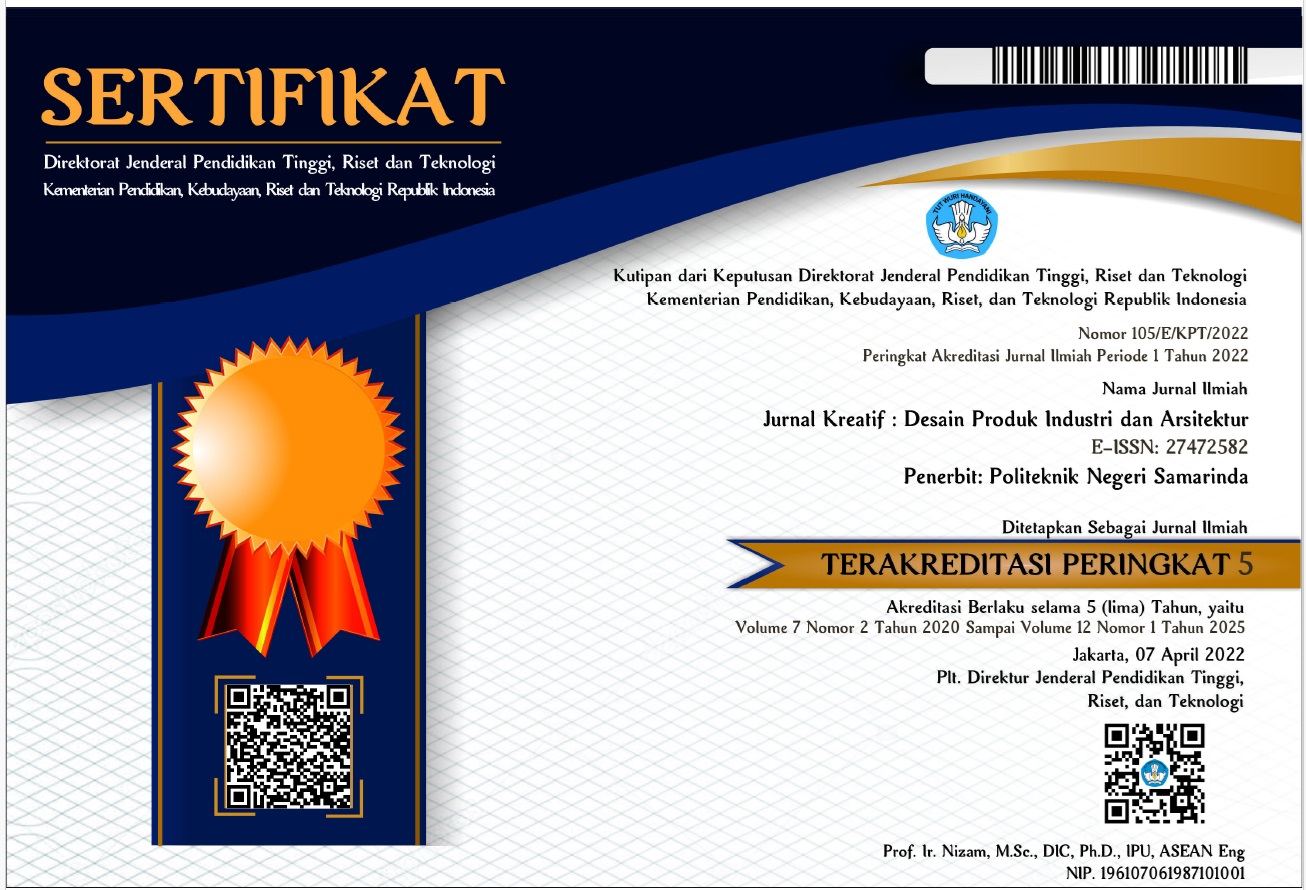DESAIN HALTE BIS SURABAYA DENGAN TEMA IKONIK
 Abstract views: 783
,
Abstract views: 783
,
 pdf downloads: 920
pdf downloads: 920
Abstract
Bus shelter for public transport in Surabaya has been made to accommodate the needs of the Department of Transportation and government city. This facilities built to attract public interest to using public transportation. Currently, several shelter Surabaya Bus have been built, but the existing conditions of the bus stops have not met the requirements. Therefore it is necessary to design a Surabaya bus stop that offers convenience, security and most importantly introduces the city of Surabaya both for tourist purposes and for city branding. There is a need for shelters that are designed aesthetically, comfortably and the most important thing is that users feel safe when they are at bus stops. Designed by paying attention to the overall design principles, namely the character of the user, both disabled and normal, user activities and support facilities. Exterior and interior bus shelter concept design use tropical and iconic ornaments from Surabaya iconic places
Downloads
References
Authority, W. M. A. T. (2009). Guidelines for the Design and Placement of Transit Stops. Washington: KFH Group.
Darat, D. J. P. (1996). Pedoman Teknis Perekayasaan Tempat Perhentian Kendaraan Penumpang Umum. Jakarta: Departemen Perhubungan.
Mujimin, W. (2007). Penyediaan Fasilitas Publik Yang Manusiawi Bagi Aksesibilitas Difabel. Paper presented at the art & design, Yogyakarta.
Nurmianto, E. (1991). Ergonomi Konsep Dasar dan Aplikasinya, Surabaya. Surabaya: Prima Printing.
Nurmianto, E. (2006). Accessible Bus Stop Design Guidance. Retrieved from www.tfl.gov.uk,
Program, T. C. R. (2006). Guidelines for The Design and Location for Bus Stops. Washington.
Surabaya, P. K. (2016). Rencana Strategis Kota Surabaya 2016-2021. Surabaya: Pemerintah Kota Surabaya.
Tjahjadi, D. l. S. (1996). Data Arsitek (Vol. 33). Jakarta: Erlangga.
Copyright (c) 2021 Yohanes Firananta Setyo Atmono

This work is licensed under a Creative Commons Attribution-ShareAlike 4.0 International License.
Authors who publish with this journal agree to the following terms:
- Copyright on any article is retained by the author(s).
- The author grants the journal, right of first publication with the work simultaneously licensed under a Creative Commons Attribution License that allows others to share the work with an acknowledgment of the work’s authorship and initial publication in this journal.
- Authors are able to enter into separate, additional contractual arrangements for the non-exclusive distribution of the journal’s published version of the work (e.g., post it to an institutional repository or publish it in a book), with an acknowledgment of its initial publication in this journal.
- Authors are permitted and encouraged to post their work online (e.g., in institutional repositories or on their website) prior to and during the submission process, as it can lead to productive exchanges, as well as earlier and greater citation of published work.
- The article and any associated published material is distributed under the Creative Commons Attribution-ShareAlike 4.0 International License













